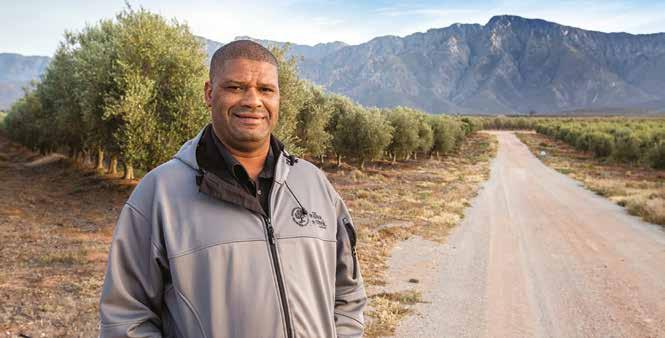
2 minute read
What’s new in CapeFarmMapper?
by WCDOA pubs

by FC Basson, fcbasson@elsenburg.com
WWhether you are a new or existing user of CapeFarmMapper, you might not be aware of the exciting new features and tools added to the application recently. CapeFarmMapper is the department’s main online mapping application and it provides access to the spatial data of a wide variety of agricultural and natural resources, as well as mapping tools. The application is free to anyone, no registration is required and it can be accessed at gis.elsenburg.com/apps/cfm/ or scan the QR code.
Through continuous engagement with users, our geographical information systems (GIS) unit has been able to determine new user requirements and implement these requirements as new features and tools in the application. This article will show you what you have been missing out on.

Better interaction with spatial features
The new Convert Feature to Graphic action button is available in the map information window for any resource layer that a user has clicked on the map. Once a layer has been activated and a feature has been identified, the feature can be converted to a graphic feature by clicking this action button. This allows the user to do further drawing and analysis with the newly created graphic feature, e.g. buffering or zonal statistics.
imported graphic features as local storage items. Users should take care when using this functionality, for clearing your browser cache will also clear all the Local Storage items, hence it is still a good idea to export your drawings regularly as a backup. The Local Storage is situated in the Import/ Export panel.

Local is lekker
The new Local Storage functionality of CapeFarmMapper allows users to save graphic features and drawing sets within the browser’s memory. This is a major step forward from importing and exporting data to use across sessions, making it easy to load previously created drawings onto the map. Users can create new graphic sets and modify existing ones, as well as store
Monitoring your field health
Through cloud-service access to satellite data, a user can now easily monitor field or vegetation health with the NDVI time series tool. NDVI is short for Normalised Difference Vegetation Index and is a common method for evaluating vegetation health. By simply activating the tool and clicking on an existing polygon graphic, an interactive temporal NDVI graph is generated from Sentinel-2 satellite data and displayed in an information window. The user can view and compare NDVI values up to three years earlier. The graph can also be exported to a PNG file for offline use.

Satellite base maps
The base maps have been expanded to include Sentinel-2 satellite imagery as backdrop layers. Sentinel-2 provides 10-meter resolution satellite imagery every five days. On selecting any of the Sentinel-2 base maps, the user will see a calendar menu in the top left of the map view that can be used to select a previous date for the visible image. Users have a choice of Natural Colour, Short-Wave infrared or NDVI base maps.

In the Zone
Spatial data is all about answering the “how much of what is where” question and the new Zonal Statistics tool does just that. The tool provides summaries of feature statistics for various layers within a selected zone. By activating the tool and clicking on an existing polygon graphic, a tabular summary is generated and displayed for the selected data layer. The data can also be exported to an Excel-compliant file. If you want to know the different crop types or the distribution of land cover classes within an area, this is the tool to use. Spatial analysis has never been easier.

The CapeFarmMapper team is continuously striving to improve the application for the benefit of all users. Keep an eye out for any version changes that indicate feature or data changes or new additions, which is also contained in the change log in the start-up dialogue window. For any support or enquiries, contact us at info@elsenburg.com.
For further reading, see AgriProbe Vol. 15 No. 1 of 2018, p. 44, and AgriProbe Vol. 10 No. 3 of 2013, p. 4











